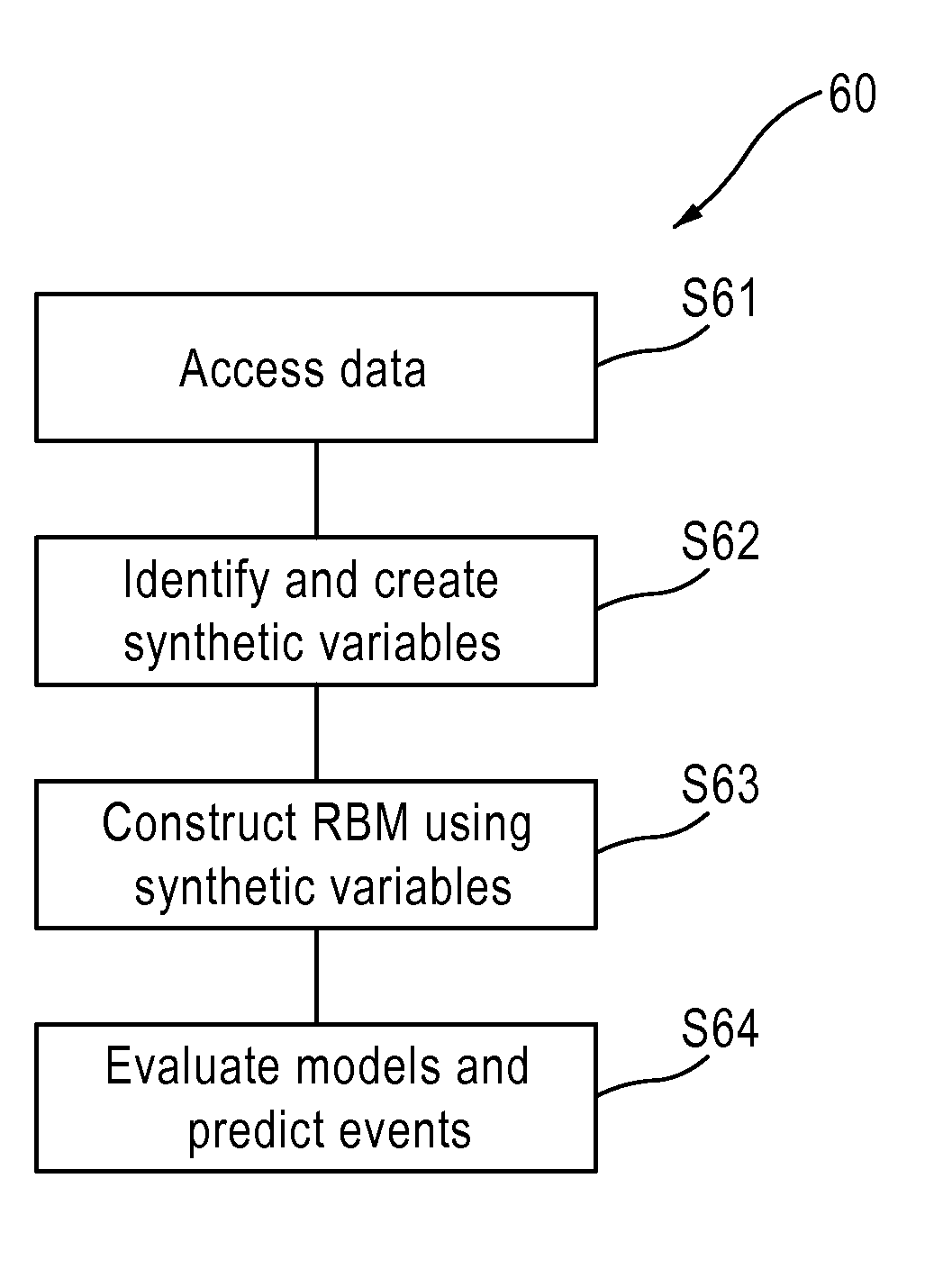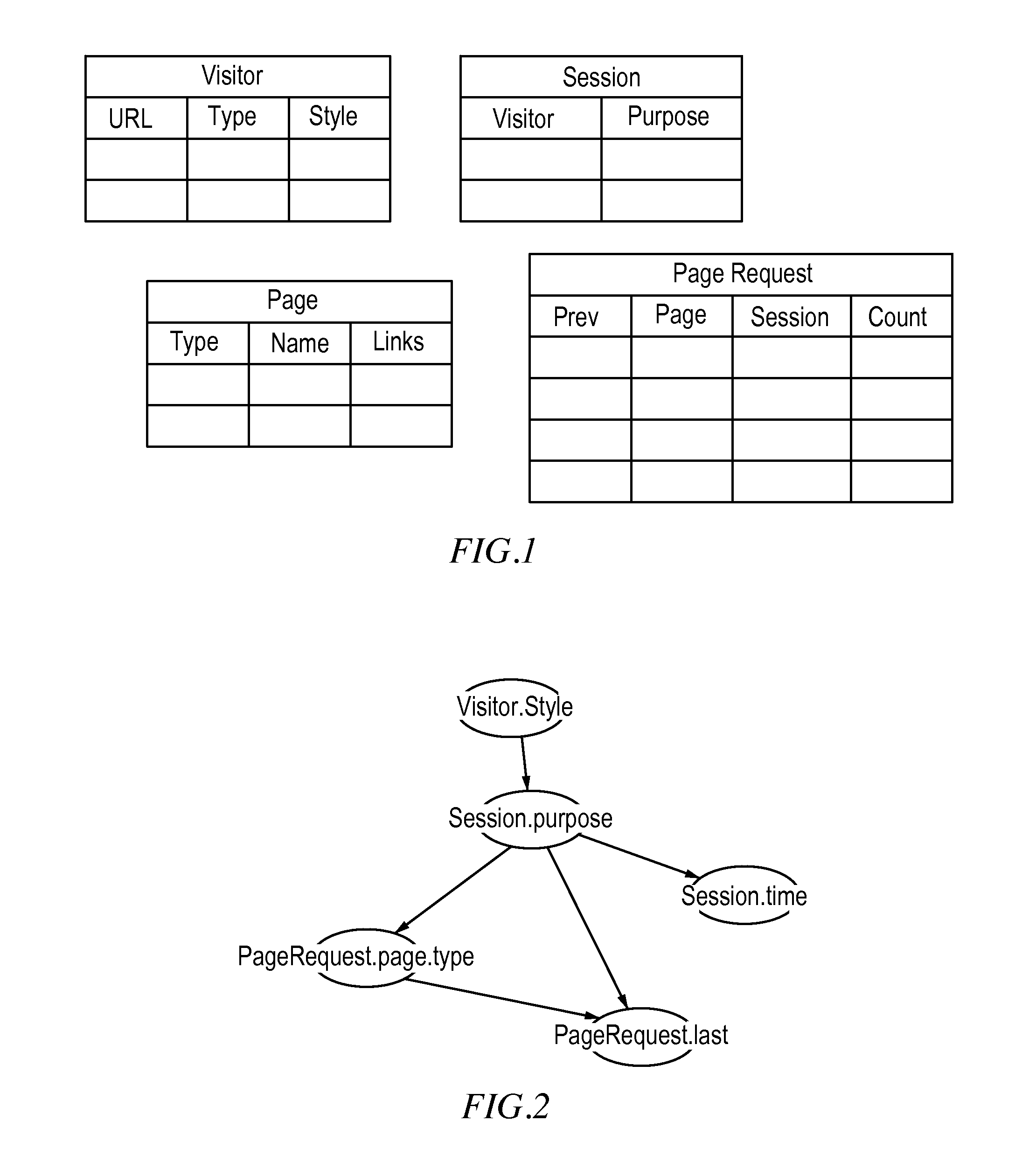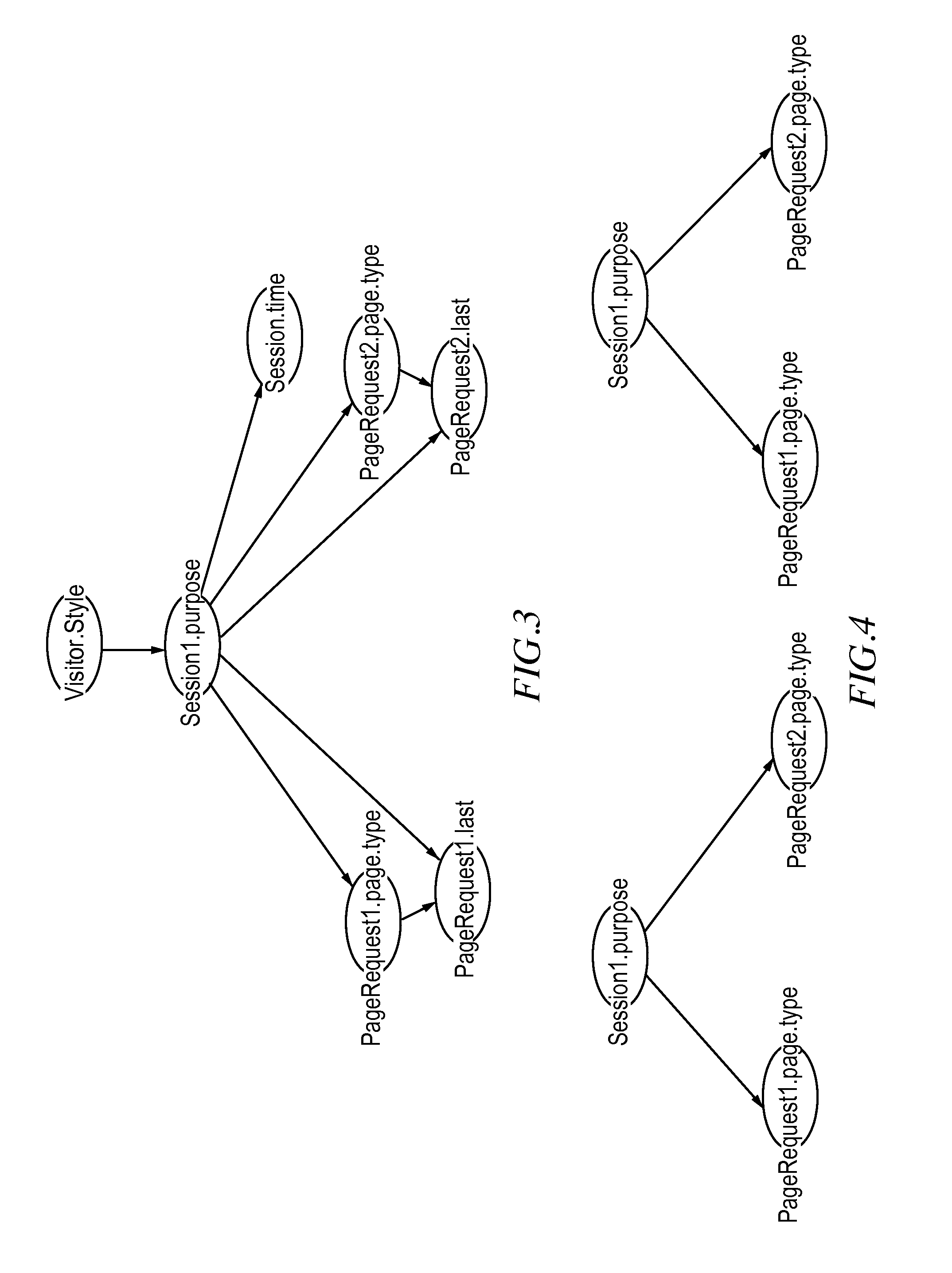Relational bayesian modeling for electronic commerce
a technology of relational bayesian network and electronic commerce, applied in computing models, electric/magnetic computing, instruments, etc., can solve the problems of not being dynamic and responsive, not being able to model web visitor behavior accurately in real-time, and not being able to meet the needs of customers
- Summary
- Abstract
- Description
- Claims
- Application Information
AI Technical Summary
Benefits of technology
Problems solved by technology
Method used
Image
Examples
Embodiment Construction
The present invention provides a language, method and system to formulate and evaluate relational Bayesian networks in an e-commerce environment. The present invention employs a specific language for constructing synthetic variables used to predict events in the Bayesian networks. The present system, methods and language allow for efficient and accurate representation, inference, and discovery of the variables used to model web visitor behavior.
FIG. 5 depicts a high-level block diagram of a computer system 50 that implements the present invention. As shown, computer system 50 comprises input interfaces 52, processor 54, communications interface 55, memory 53 and output interfaces 56, all connected by bus 57. Memory 53 stores the operating system programs and the application programs of the present invention.
The inputs to the system 50 include an internet access line 45, a user input device 59 and a connection to a database 51. These inputs are connected through the appropriate inter...
PUM
 Login to View More
Login to View More Abstract
Description
Claims
Application Information
 Login to View More
Login to View More - R&D
- Intellectual Property
- Life Sciences
- Materials
- Tech Scout
- Unparalleled Data Quality
- Higher Quality Content
- 60% Fewer Hallucinations
Browse by: Latest US Patents, China's latest patents, Technical Efficacy Thesaurus, Application Domain, Technology Topic, Popular Technical Reports.
© 2025 PatSnap. All rights reserved.Legal|Privacy policy|Modern Slavery Act Transparency Statement|Sitemap|About US| Contact US: help@patsnap.com



